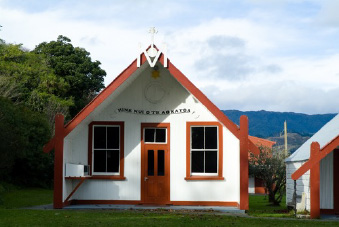I have had the good fortune to visit many places of exceptional natural beauty.
Two stand out in my memory always; the Grand Canyon in Arizona, and Niagara Falls which border New York State in the USA and Ontario Canada.
Like many natural beauties, they can be experienced, however words fail to describe the experience with any accuracy.
“You will just have to see for yourself!” the person trying to describe will end up saying.
The same is true for great works of art, opera, musical composition. How does one put into words the different hues of blue in Van Gogh’s “Starry Night”, or the exquisite beauty in the harmony from Mozart’s duet ‘La ci darem la mano’ from the opera Don Giovanni, or Puccini’s B4, required of the tenor in the aria ‘Nesun Dorma’ from the opera Turandot?
I remember well while on a formation programme for Spiritual Directors one of the facilitators of the course saying quite definitely, “whenever you are sitting with another, and they preface their remarks by saying, ‘you are not going to believe this, but . . .’ or in a similar way saying, ‘this may sound silly to you, but . . . ‘ prick up your ears and pay close attention, they are about to attempt to put into words an experience of God!”
God’s ways are not our ways!
There is more truth to that than we normally think.
God is ineffable.
What that means is that God cannot be captured in our thoughts or pictured inside our imaginations.
This truth is one of the first things that the church affirms in its understanding of God, defining as a dogma at the Fourth Lateran Council in 1215 that God is so metaphysically different from anything we can know or imagine that all of our concepts and language about God are always more inadequate than adequate.
God can be known, but never imagined or captured in a thought.
Why not?
Why can we never form a picture of God or speak about God in adequate ways?
Because God is infinite and our minds are finite. Infinity, by definition, can never be circumscribed.
That might sound abstract, but it is not.
For example: Try to imagine the highest number to which it is possible to count?
Instantly you realize that this is an impossible task because numbers are infinite and there is always one more. It is impossible to conceive of the highest number.
This is even truer in terms of any imaginative picture we try to form of God and of how we try to imagine God’s existence. God is infinite and infinity cannot be captured or imagined inside of any finite thought.
This is important to understand, not to safeguard some theoretical point, but for our understanding of faith.
We tend to identify a weak faith with a weak imagination, just as we tend to identify atheism with the incapacity to imagine the existence of God
Faith in God is not to be confused with the capacity or incapacity to imagine God’s existence.
Infinity cannot be circumscribed by the imagination. All we say of God is true, but . . . there is always more.
With God it is always ‘not only but also’.
Many will have heard part or all of the duet titled ‘Au fond du temple saint’ from Bizet’s opera The Pearl Fishers (NZ Rail do the duet are huge disservice by using only a part of the duet as music to their TV commercial!).
My guess is that few would understand a word of it as it is sung in French!
Few would know that it is a song of reconciliation between friends who had fallen out!
However, if you close your eyes and listen with the ears of the heart, words and meaning have no purpose as you are caught up in the beauty of the sound.
My suggestion is, faith may be less about knowing, and more about enjoying.
If you wish to experience God, close off the eyes of your mind, open wide the ears of your soul and listen to the music your God is singing.

